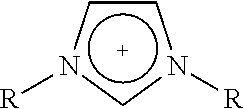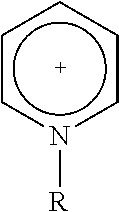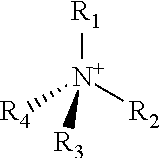Hybrid Supported Metallocene Catalyst, Method for Preparing the Same, and Process for Preparing Polyolefin Using the Same
- Summary
- Abstract
- Description
- Claims
- Application Information
AI Technical Summary
Benefits of technology
Problems solved by technology
Method used
Image
Examples
preparation example 1
Preparation of Second Metallocene Compound
[0078]
Preparation of 9,9-dihexyl-9H-fluorene
[0079]A 2000 mL round flask was charged with 9H-fluorene (50 g, 300.1 mmol) and potassium t-butoxide (77.0 g, 721.9 mmol), and then 700 mL of DMSO was slowly injected thereinto. 1-Bromohexane (119 g, 721.9 mmol) was slowly added thereto from a dropping funnel under nitrogen atmosphere. The mixture was stirred at room temperature for 24 hours, and the reaction was terminated by adding 500 mL of distilled water. The organic layer extracted with n-hexane was collected and dried over magnesium sulfate, followed by removal of volatile materials, and then purified with n-hexane by using silica gel column chromatography, followed by drying and long-time storage at room temperature, thereby obtaining 90.0 g of 9,9-dihexyl-9H-fluorene (yield: 72.40%) as solid.
[0080]1H-NMR (500 MHz, CDCl3, ppm): δ=0.625-0.628 (m, 4H), 0.759-0.785 (m, 6H), 1.050-1.125 (m, 12H), 1.953-1.983 (t, 4H), 7.293-7.340 (m, 6H), 7.706-...
example 1
1. Preparation of Hybrid Supported Metallocene Catalyst on Silica Surface-Treated with Ionic Compound and Co-Catalyst
[0093]18.3 mg of an ionic compound 1,3,-bis(cyanomethyl)-imidazolium chloride (Fluka Co., 0.1 mmol) was injected into a round bottom flask charged with 1 g of silica H-122 (Japan, Asahi Glass Co., average particle size: 12, surface area: 700 m2 / g, average pore volume: 1.8 mL / g, average pore diameter 20 nm), and MAO (aluminum content: 7 weight %, Albemarle Corp., 50 mmol-Al) diluted in toluene was injected thereinto. The mixture was sufficiently stirred at 100° C. for 3 hours using a magnetic bar. After the temperature was lowered to 80° C., bis(n-butylcyclopentadienyl)zirconium dichloride ((n-BuCp)2ZrCl2, Boulder Scientific company, 64.7 mg, 0.16 mmol), which is a first metallocene catalyst, and (t-butylamido)dimethyl(9,9-dihexyl-2-methyl-3(1),9-dihydrocyclopenta[b]fluoren-3(1)-yl)silanetitanium(IV)dimethyl (Preparation Example 1, 142 mg, 0.24 mmol), which is a second...
example 2
1. Preparation of Hybrid Supported Metallocene Catalyst on Silica Surface-Treated with Ionic Compound and Co-Catalyst
[0095]A hybrid supported metallocene catalyst was prepared by the same process as the process of preparing the hybrid supported metallocene catalyst in 1 of [Example 1] except that (t-butylamido)dimethyl(2,9,9-trimethyl-3,9-dihydrocyclopenta[b]fluoren-3-yl)silanetitanium(IV)dimethyl (108.4 mg, 0.24 mmol) was used as the second metallocene compound, thereby obtaining 3.34 g of hybrid supported metallocene catalyst.
2. Polymerization of Ethylene Slurry
[0096]A polymerization reaction was performed by the same method as the ethylene slurry polymerization method in 2 of [Example 1] using the above prepared supported catalyst, thereby obtaining 133 g of the polymer.
PUM
| Property | Measurement | Unit |
|---|---|---|
| Temperature | aaaaa | aaaaa |
| Percent by mass | aaaaa | aaaaa |
| Polarity | aaaaa | aaaaa |
Abstract
Description
Claims
Application Information
 Login to View More
Login to View More - R&D
- Intellectual Property
- Life Sciences
- Materials
- Tech Scout
- Unparalleled Data Quality
- Higher Quality Content
- 60% Fewer Hallucinations
Browse by: Latest US Patents, China's latest patents, Technical Efficacy Thesaurus, Application Domain, Technology Topic, Popular Technical Reports.
© 2025 PatSnap. All rights reserved.Legal|Privacy policy|Modern Slavery Act Transparency Statement|Sitemap|About US| Contact US: help@patsnap.com



